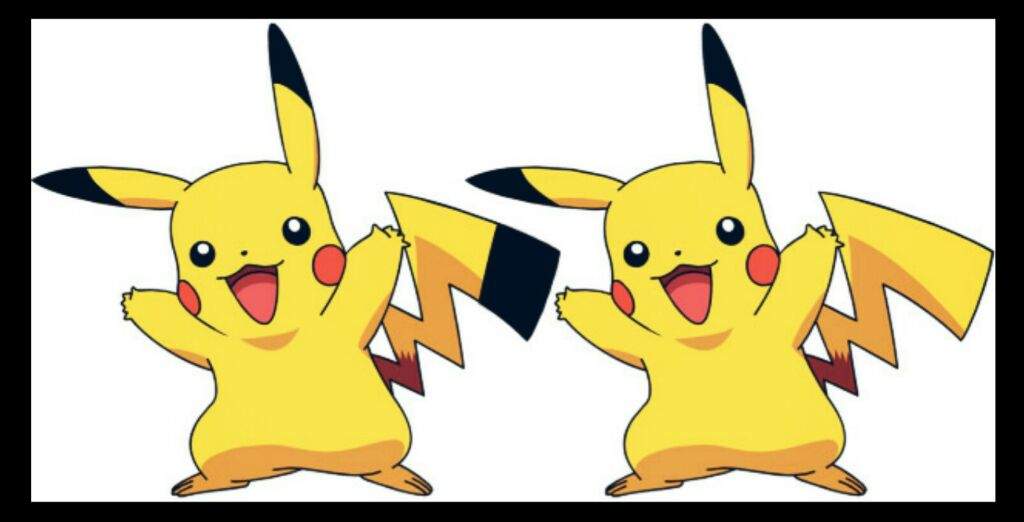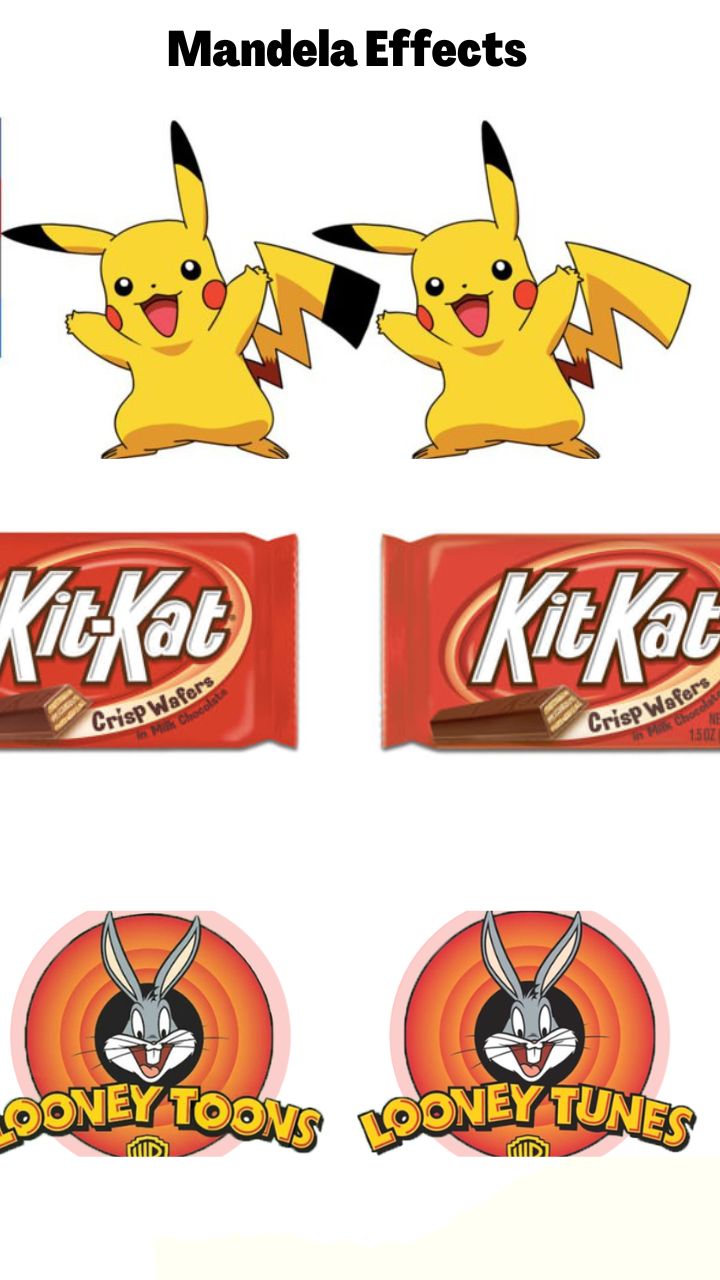The Pikachu Mandela Effect is a phenomenon that has captured the attention of many fans of the Pokémon franchise. It revolves around a collective misremembering of a character's appearance, specifically Pikachu. This adorable electric-type Pokémon, known for its iconic yellow fur and bright red cheeks, has become a cultural icon since its debut in the late 1990s. However, a surprising number of people vividly recall Pikachu sporting a black stripe on its tail, a detail that doesn't actually exist in the official designs. This discrepancy has led to intriguing discussions and theories surrounding the Mandela Effect, which refers to the phenomenon where a large group of people remembers an event or detail differently than the factual record.
As fans delve into the Pikachu Mandela Effect, they often find themselves questioning their own memories and the reliability of collective recollection. How can so many people be wrong about such a well-known character? This phenomenon has sparked conversations about memory, perception, and the influence of pop culture on our understanding of reality. The Pikachu Mandela Effect serves as a captivating example of how shared experiences and memories can diverge from actual facts, leaving us pondering the nature of memory itself.
In this article, we will explore the origins of the Pikachu Mandela Effect, examine the psychology behind it, and discuss its implications on our understanding of memory and culture. Prepare to embark on a journey through the world of Pokémon and the curious case of Pikachu, where reality and perception intertwine in fascinating ways.
What is the Pikachu Mandela Effect?
The Pikachu Mandela Effect refers to the widespread belief among fans that Pikachu has a black stripe on its tail. Despite this shared memory, the official design of Pikachu does not feature such a stripe. This collective misremembering is a prime example of the Mandela Effect, which takes its name from the famous South African leader Nelson Mandela. Many people incorrectly believed that Mandela died in prison during the 1980s, when in fact he was released in 1990 and went on to become president. Similarly, the Pikachu Mandela Effect illustrates how a large group of individuals can confidently recall a detail that is, in fact, inaccurate.
How Did the Pikachu Mandela Effect Start?
The origins of the Pikachu Mandela Effect can be traced back to the immense popularity of the Pokémon franchise since its inception in the late 1990s. As Pokémon grew in popularity, Pikachu became synonymous with the brand, appearing in video games, trading cards, animated series, and movies. This ubiquitous presence in various media may have contributed to the confusion surrounding Pikachu's design. Over time, fans may have encountered fan art, merchandise, or altered images that depicted Pikachu with a black stripe on its tail, leading to a collective belief in this false detail.
Are There Other Examples of the Mandela Effect?
- Looney Tunes vs. Looney Toons: Many people remember the animated series as "Looney Toons," but it is officially titled "Looney Tunes."
- Febreze vs. Febreeze: The popular fabric freshener is actually spelled "Febreze," not "Febreeze."
- Oscar Meyer vs. Oscar Mayer: The famous hot dog brand is spelled "Oscar Mayer," not "Oscar Meyer," as many remember.
- Curious George’s Tail: Many fans recall the beloved monkey having a tail, but he is actually tail-less.
Why Do We Experience the Pikachu Mandela Effect?
The Pikachu Mandela Effect can be attributed to several psychological factors. One significant aspect is the concept of "false memories," which refers to recollections that people believe to be true but are not. This can occur due to the influence of external factors such as media representation, cultural references, and social interactions. When a large group of people shares a false memory, it becomes reinforced through discussions and online forums, leading to an even stronger belief in its accuracy.
What Role Does Social Media Play in the Pikachu Mandela Effect?
Social media platforms have become a breeding ground for discussions surrounding the Pikachu Mandela Effect. As fans share their memories and engage in conversations, they inadvertently validate one another's beliefs. Memes, videos, and articles discussing the Pikachu Mandela Effect can further perpetuate this collective misremembering. The viral nature of social media allows these ideas to spread rapidly, reinforcing shared misconceptions and leading to a phenomenon where many individuals become convinced of a memory that doesn't align with reality.
How Can We Trust Our Memories?
The Pikachu Mandela Effect raises important questions about the reliability of our memories. While we often believe our recollections to be accurate, memory is not a perfect recording of events. It is influenced by various factors, including emotions, experiences, and external information. Cognitive psychologists have demonstrated that memories can change over time and may even be reconstructed based on new information. Understanding the fallibility of memory can help individuals approach their recollections with a more critical mindset, especially in the age of misinformation.
Conclusion: Embracing the Mystery of the Pikachu Mandela Effect
The Pikachu Mandela Effect serves as a fascinating case study in the complexities of memory and perception. As fans of the Pokémon franchise grapple with their recollections of Pikachu's design, they are reminded of the malleability of memory and the shared experiences that shape our understanding of reality. Whether you remember Pikachu with a black stripe on its tail or not, the discussion surrounding this phenomenon highlights the importance of questioning our memories and recognizing the power of collective belief. So, the next time you find yourself in a debate about Pikachu's appearance, remember that sometimes, perception can be just as powerful as reality.
Biography of Pikachu
| Attribute | Details |
|---|---|
| Name | Pikachu |
| Species | Mouse Pokémon |
| Type | Electric |
| Height | 0.4 m (1'04") |
| Weight | 6.0 kg (13.2 lbs) |
| Abilities | Static, Lightning Rod (Hidden Ability) |
| First Appearance | Pokémon Red and Green (1996) |
Pikachu remains an enduring symbol of the Pokémon brand and continues to capture the hearts of fans worldwide. The charm and charisma of this little electric mouse have made it a beloved character for generations, and its status as a cultural icon is unlikely to fade anytime soon.
Unveiling Timbaland's Net Worth: A Journey Through His Success
Unraveling The Connection Between Lana Rhoades And Kevin Durant
The Rise Of The World Hottest Porn Star: A Journey To Fame



ncG1vNJzZmiqn5i4o77InZ6emqKqtq%2B%2FjaipoGedpMVwvMikmJygpWK6orrDnqOaZZWbs6av02efraWc
